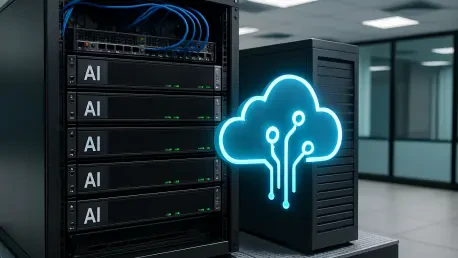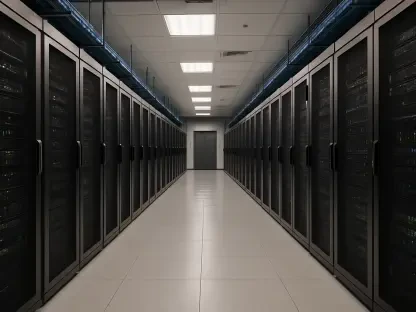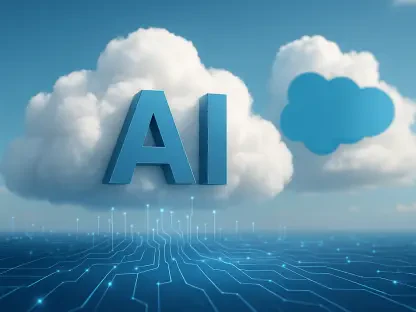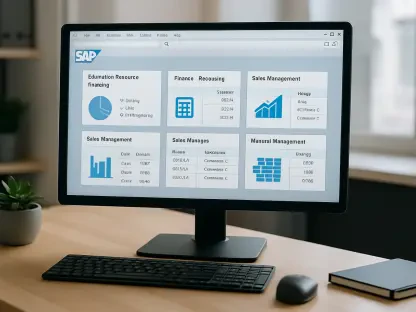In an era where technology relentlessly pushes boundaries, artificial intelligence (AI) stands out as a transformative force reshaping the very fabric of labor and software markets. Imagine a world where software no longer just organizes data for human use but actively performs complex tasks, effectively replacing or augmenting human effort on a massive scale. This shift is not a distant dream but a current reality, poised to unlock trillions of dollars in economic value by tapping into markets previously dominated by human labor. The potential is staggering when one considers that the U.S. labor market alone is worth $13 trillion annually, dwarfing the $300 billion generated by the global Software-as-a-Service (SaaS) industry. This disparity highlights a monumental opportunity for AI to redefine how work is conducted, creating new economic landscapes and challenging long-standing business models. As this transformation unfolds, it becomes crucial to explore the mechanisms and implications of such a seismic shift.
The Evolution of Software’s Role in Business
From Digitization to Active Agency
The journey of software in business has undergone a profound transformation, moving from a mere tool for digitizing information to an active agent capable of performing tasks once reserved for humans. In earlier decades, systems like airline reservation platforms or sales management tools focused on converting physical records into digital formats, streamlining processes but still relying heavily on human oversight for decision-making and execution. Today, AI marks a pivotal shift, enabling software to execute end-to-end tasks autonomously. This means that instead of simply organizing data for people to act upon, AI-driven systems can now handle complex operations, such as customer service inquiries or logistical negotiations, with minimal human intervention. The implication is clear: software is no longer just a facilitator but a direct contributor to labor, fundamentally altering the dynamics of work across industries and opening up new avenues for efficiency and innovation.
Redefining Economic Value
This evolution in software’s role brings with it a redefinition of economic value, as AI challenges traditional metrics of productivity and cost. Where once the value of software was tied to its ability to support human workers, it now lies in its capacity to deliver outcomes independently, often surpassing human capabilities in speed and consistency. For instance, an AI agent handling thousands of customer queries in a fraction of the time a human team would take disrupts the conventional understanding of labor costs and output. This shift forces a reevaluation of how businesses measure return on investment, moving away from per-user pricing models to outcome-based assessments. As a result, industries are witnessing the emergence of new economic models that prioritize results over access, reflecting a broader trend where AI not only enhances existing processes but also creates entirely new categories of value that were previously unattainable due to human limitations.
AI’s Impact on Market Dynamics and Opportunities
Disruption of Traditional Business Models
The integration of AI into software markets is sparking a significant disruption of traditional business models, particularly in the SaaS sector. Conventional pricing structures, often based on the number of human users or seats, are becoming obsolete as AI agents can replicate the work of thousands of individuals with a single deployment. Consider a customer support platform where an AI system processes vast volumes of inquiries at a scale no human team could match—purchasing thousands of user licenses for such a system no longer makes economic sense. This necessitates a pivot toward revenue models focused on outcomes rather than access, where businesses pay for tangible results like resolved tickets or completed transactions. Such a transformation signals a fundamental change in how software companies position their offerings, pushing them to prioritize efficiency and impact over mere tool provision, and reshaping competitive landscapes across the tech industry.
Overcoming Labor Constraints
AI’s ability to address inherent limitations of human labor is creating unprecedented market opportunities, especially for smaller enterprises. Challenges such as fluctuating demand, repetitive tasks that drain morale, regulatory compliance burdens, and language barriers can now be mitigated through intelligent automation. For instance, small businesses previously unable to afford multilingual support or complex compliance solutions can now leverage AI to access these services at a fraction of the cost, with greater reliability than human staff could offer. This capability not only streamlines existing operations but also enables entirely new business models that were once unfeasible due to high operational costs or logistical hurdles. By lowering these barriers, AI expands the total addressable market, allowing industries to tap into segments that were previously out of reach and fostering innovation in sectors constrained by traditional labor challenges.
Real-World Applications and Accessibility
Concrete examples of AI’s impact illustrate how it enhances accessibility and affordability across diverse sectors. AI agents are already negotiating freight loads over phone calls with human-like fluency or managing overdue payments in multiple languages while ensuring compliance with local regulations—tasks that are often resource-intensive for human workers. These applications demonstrate that AI doesn’t merely replace human effort but democratizes access to sophisticated services, enabling businesses of all sizes to compete on a more level playing field. Companies that once couldn’t justify investments in such capabilities due to budget constraints now find themselves empowered to scale operations or enter new markets. This trend underscores a broader shift where AI acts as a great equalizer, breaking down economic and operational barriers and allowing for innovation and growth in areas previously limited by the high cost or complexity of human labor.
Shaping Future Economic Landscapes
Looking back, the strides made by AI in transforming labor and software markets reveal a landscape ripe with both challenge and opportunity. The disruption of traditional models forced businesses to adapt, pivoting toward outcome-driven approaches that prioritized tangible results over conventional metrics. Meanwhile, the ability of AI to overcome human labor constraints opened doors for countless enterprises, leveling access to advanced capabilities. Reflecting on these shifts, it becomes evident that the next steps involve embracing flexible strategies to integrate AI seamlessly into existing frameworks while continuously innovating to address emerging needs. Businesses are encouraged to explore partnerships with tech pioneers to stay ahead of evolving trends and to invest in upskilling workforces for roles that complement AI systems. As this journey progresses, the focus remains on harnessing AI’s potential to not only optimize but truly redefine economic structures, ensuring sustainable growth in an ever-changing digital era.









